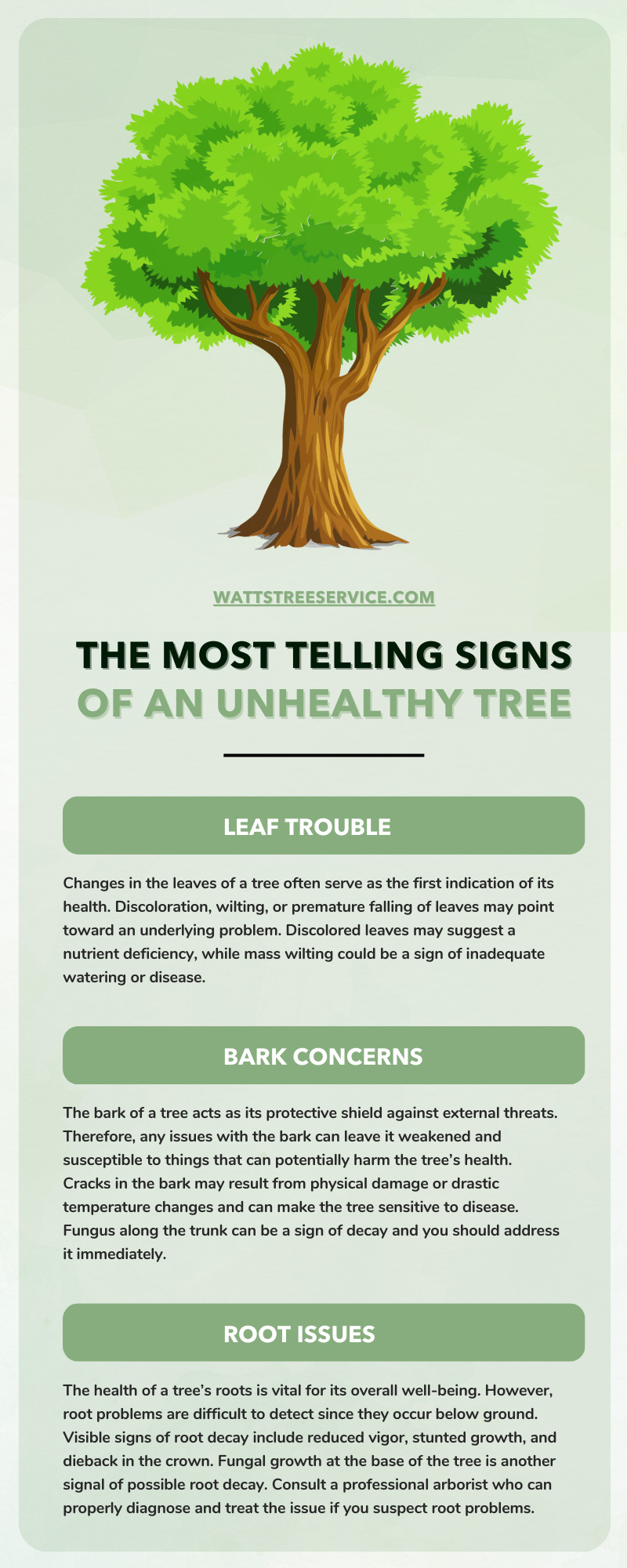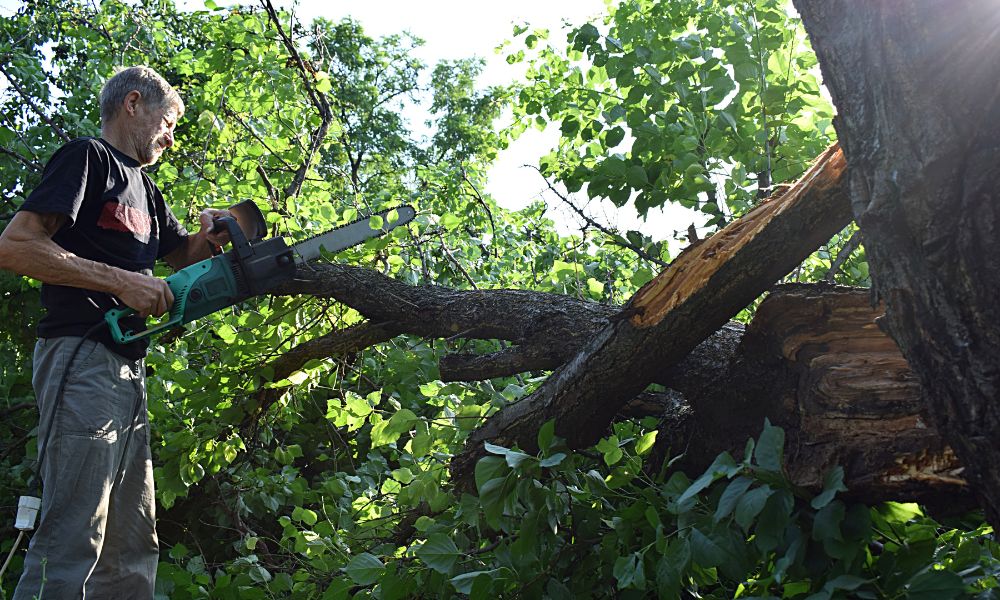The trees in your backyard might seem like permanent, immovable fixtures on your property, but that’s not always the case. Over time, even the sturdiest of trees can develop its share of issues. While some of these problems are minor, some can result in the tree developing a full-fledged illness that you need to address. Knowing whether you have an unhealthy tree on your land is a crucial part of keeping everything looking nice and your family from sustaining injuries. So, we’ve compiled a list of the most telling signs of an unhealthy tree for you to be on the lookout for. Here’s what you need to know.
The Importance of Monitoring Tree Health
Before we can dive into the details that indicate that you have an unhealthy tree on your land, we need to discuss why you need to stay informed. Simply put, monitoring the health of your trees is an essential part of being a responsible homeowner because it helps you avoid larger safety hazards. Regular checks can help identify potential problems early, allowing you to take remedial action or consult with a professional arborist before the issue escalates. Not only do regular inspections ensure the longevity of your trees, but they also maintain the safety and beauty of your property.
Failing to look after your trees can result in expensive property damage for you and your neighbors. Ill trees can also be a safety risk that puts the well-being of your family in the hands of chance. As such, the more you can do now to keep your trees healthy, the better off everyone will be in the long run.
Signs Your Trees Are Unhealthy
Now that you know a bit more about why you should be attentive when it comes to your property’s trees, we’ll dive into some key things to watch for. An unhealthy tree has several telling signs, but the ones we’ve listed here are among the most common and serious. You should reach out to an arborist for advice if you notice any of these indicators.
Leaf Trouble
Changes in the leaves of a tree often serve as the first indication of its health. Discoloration, wilting, or premature falling of leaves may point toward an underlying problem. Discolored leaves may suggest a nutrient deficiency, while mass wilting could be a sign of inadequate watering or disease. Premature leaf fall, especially outside of the usual fall season, may indicate stress or disease. It’s crucial to address these signs promptly to prevent further damage to the tree and to keep it looking its best year-round.
Bark Concerns
The bark of a tree acts as its protective shield against external threats. Therefore, any issues with the bark can leave it weakened and susceptible to things that can potentially harm the tree’s health. Cracks in the bark may result from physical damage or drastic temperature changes and can make the tree sensitive to disease. Fungus along the trunk can be a sign of decay and you should address it immediately. Additionally, peeling bark is a natural process in some trees, but in others, it may indicate a serious problem such as disease or insect infestation.
Root Issues
The health of a tree’s roots is vital for its overall well-being. However, root problems are difficult to detect since they occur below ground. Visible signs of root decay include reduced vigor, stunted growth, and dieback in the crown. Fungal growth at the base of the tree is another signal of possible root decay. Consult a professional arborist who can properly diagnose and treat the issue if you suspect root problems.
Branch Problems
Observing the branches of your trees can provide critical insights into their health. Dead branches are a clear sign of an unhealthy tree. Their death can result from a variety of issues, including disease, pest infestation, or environmental stress. Similarly, weak limbs that easily break or bend may indicate poor tree health. Regular pruning can help remove these problematic branches and prevent potential hazards.
Pest Infestations
Pests pose a significant threat to tree health since they can burrow into the bark and leave the tree exposed to illness. Common pests that affect trees include beetles, borers, and caterpillars. These pests can cause extensive damage, ranging from leaf chewing to bark boring, often leading to tree death in severe cases. Regular monitoring for signs of pests, such as unusual markings on leaves or bark, can help detect an infestation early and allow for timely treatment.
Preventive Measures: How To Keep Your Trees Healthy
Understanding the common indicators above and knowing the appropriate action to take is vital in keeping your trees thriving for years to come. But it takes more than a reactive approach to ensure they stay truly healthy. Maintaining tree health involves several preventive measures. Regular watering, especially during dry seasons, helps keep trees hydrated. Applying mulch around the base of trees can conserve soil moisture and regulate soil temperature. Annual fertilization provides necessary nutrients for tree growth. Pruning removes dead or diseased branches, promoting healthier growth. Remember, prevention is better than a cure when it comes to tree care.
When To Call a Professional
Knowing when you need to call a professional for advice and proper treatment is also crucial. While anyone can conduct basic tree care, certain situations call for professional help. Consult a certified arborist if you notice signs of serious disease, major pest infestation, or structural problems. Regular professional inspections can also help detect potential issues early, ensuring your trees remain healthy and your property stays safe. Early detection is especially important if you aren’t confident in your ability to point out common tree problems.
Effectively maintaining the health of the trees on your property requires both vigilance and knowledge. By understanding the signs of an unhealthy tree, you can detect issues early and take appropriate action. Regularly monitor for pest infestations and keep up with preventive measures to ensure your trees stay healthy. However, do not hesitate to call a professional tree service like Watts Tree Service for regular inspections or when you notice serious problems. We’ll help you ensure the overall health, safety, and beauty of your trees for several seasons.

Last modified: April 25, 2025

